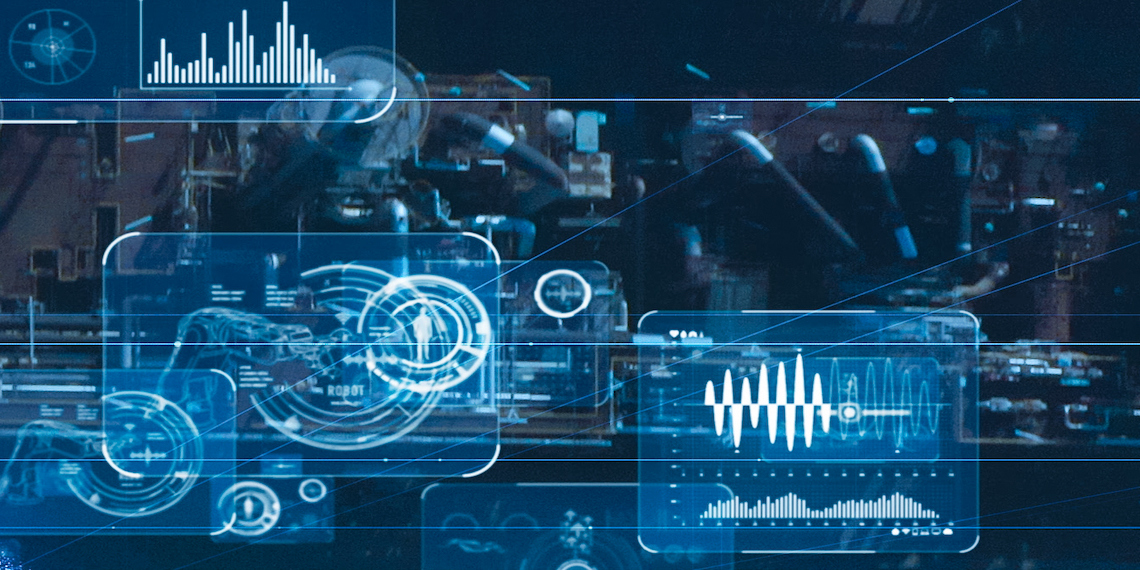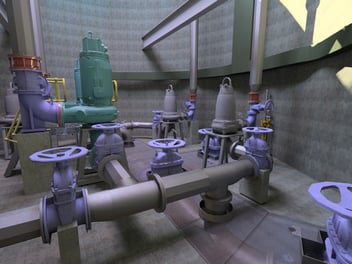Demystifying the digital twin journey

Digital twinning has been on the water sector’s radar for a while now, but, despite the proven benefits the approach can bring, one expert says there is still a need to foster a deeper understanding of how and why it should be implemented.
WSP’s first Digital Twin Guide is set to do just that. The guide is designed to help organisations understand the opportunities digital engineering solutions can offer them at every level of their digitisation journey.
WSP Director of Digital Matthew Gallaugher said the guide aims to demystify digital twinning within the water sector and beyond, and help organisations take full advantage of their current level of digital maturity.
“We aim to bring a deep digital competence to all of our services. We have the subject matter expertise to help organisations work with digital twins to do what they have always done, just better,” he said.
“But not all digital twins are equal. They come in all shapes and sizes. There are lots of different ways to implement a digital twin, ranging from relatively simple to quite complex. It’s a journey, and the most important thing is to understand your use cases.
“Every digital twin is worthwhile if you have thought about your needs first.”
Gallaugher said the guide is about raising the level of awareness around how digital twins develop and change, and to inform conversations about what’s next.
“It’s about helping companies to find out exactly what they need from their digital twins before they invest in new technology,” he said.
“About 10 years ago, there was a push on big data, which was about taking all the data available and putting it into one place. A lot of big data projects stalled because once the data was collated, people didn’t really know what to do with it.
“A digital twin is really just a big data project. It’s putting all your data in one bucket. But then you also build upon the data to digitise and simulate your assets, so digital twinning takes that next step in the big data journey.”
Seeing double
When it comes to the benefits a digital twin can provide, Gallaugher said there is value to be gained for all areas of business, particularly when it comes to optimisation.
“Digital twinning allows us to have a common picture of a large and complex system. It allows organisations to continue along the trend of data-driven decision-making that optimises efficiency in delivery of capital works programs,” he said.
“They can also be very helpful in becoming more sustainable in terms of energy, greenhouse gases and water-saving through optimisation of operations and networks.”
Gallaugher said digital twins are also a great tool for asset maintenance, helping utilities prioritise mains-renewals programs, but the process of digital twinning can also bolster integration and connection across seemingly disparate areas of the business.
“Leak detection is a big one. Locating and inspecting areas of the network where things just don’t add up and chasing down that non-revenue water can have a significant impact on financial savings for water utilities,” he said.
“Some utilities have teams that are quite siloed – they make decisions independent of other teams. But having a digital twin can help bring areas of a utility’s business much closer together to create much more holistic decision-making.”
Depending on the type of digital twin that a utility has implemented, there could also be the potential to run simulations, Gallaugher said, which could be a boon for climate adaptation efforts.
“If a utility has a whole-scale, 3D model of their entire network, they can start to ask questions about what might happen if some of the network gets flooded, or start to do assessments of bushfire risks,” he said.
But Gallaugher said it’s also important not to get too carried away, and ensure that the investment made in the digital twinning journey is justified by the organisation’s specific needs.
“For a utility that runs the network across a large geographical area, trying to measure every molecule of water within each and every pipe is probably not necessary. Having a digital twin that encompasses the micro through to the macro in that way would come at great expense and wouldn’t be value for money,” he said.
“While it’s certainly possible to accomplish that level of data fidelity, it’s about understanding where to stop. It’s important to ensure a digital twin is set up for the needs an organisation has. So water managers need to get clear on why they want a digital twin, because it will directly inform what needs to be built in the digital realm.”
Twinning journey
One of the biggest barriers to having a digital twin is a lack of awareness of what a digital twin is and how it can help, Gallaugher said, but every water organisation is in a position to start somewhere.
“People classically think of a digital twin as a huge, 3D model of the entire network, with all the bells and whistles. But if you are running a large, distributed network of pipes, you don’t need the 3D model of all of those pipes to start getting value,” he said.
“Utilities already have a lot of data about their assets on their geo-spatial systems. And, by the definition of digital twin, we could really call those systems digital twins, anyway. The key to getting started in terms of gaining insight is to bring separate systems together.
“Step one of creating a digital twin could simply be to combine the data from geo-spatial systems and SCADA platforms. The next step could be adding all the 3D data acquired from asset builds in the last twenty years, that have otherwise been sitting dormant.
“Perhaps the asset management database that sits off to the side separately could be brought in, too.”
Gallaugher said that once these simple combinations have found value to a certain point, the utility will then have a clearer idea of what’s next for them in terms of building up their digital twin even further.
“Deciding to take the digital twin pathway is really a journey,” he said.
“Organisations don’t have to achieve the biggest and best digital twin on their first go. It makes sense to start small and build up, allowing the process to inform where to go next.”
Overcoming barriers
Aside from the need for deeper understanding around what a digital twin can be and how it can help, Gallaugher said data-sharing is another key barrier facing organisations – in terms of third-party vendors but also internal teams.
“It’s important that organisations have a plan for making sure they’ve got all the data available to use. And part of this is about retaining high-fidelity data at its peak,” he said.
“During the design and construction phase, there will usually be a high-fidelity 3D model. But depending on the business and the process, that model may just be turned into 2D drawings stored for future use. The same is true for SCADA information when it comes to high frequency sampling being stored as aggregates for long term storage. There is a significant loss of value when the peak data quality is aggregated or discarded.
“Water authorities engaging third-party contractors need to ensure their agreements have appropriate data-sharing requirements. If utilities don’t get data back from contractors, the ability for them to have a digital twin is limited.”
Gallaugher said that as long as utilities can navigate these preliminary hurdles, taking the digital twin path can be hugely beneficial and continue to generate value throughout the asset’s life cycle.
“A lot of work that can be done in the digital and data space is not that expensive compared to the significant amounts of money in capital works projects and maintenance programs,” he said.
“While some companies might think setting up a digital twin is too expensive, the benefits it can deliver in terms of managing assets efficiently and effectively can be huge. Digital twins should be considered balance-sheet assets just as much as pipes, pumps, and concrete.
“Even if the digital twin can help you squeeze an extra 1% of efficiency out of the existing network, it’s already paid for itself.”


